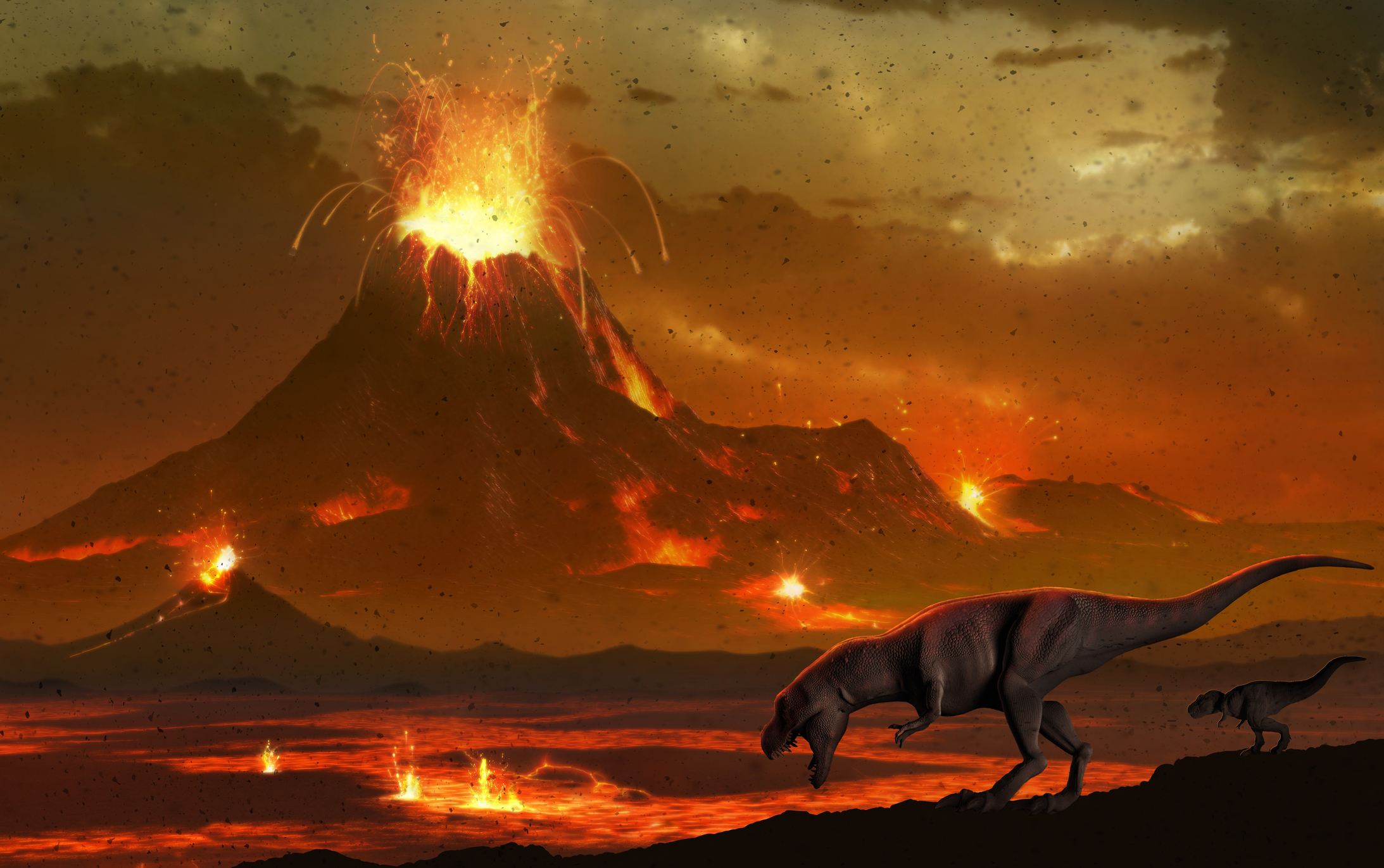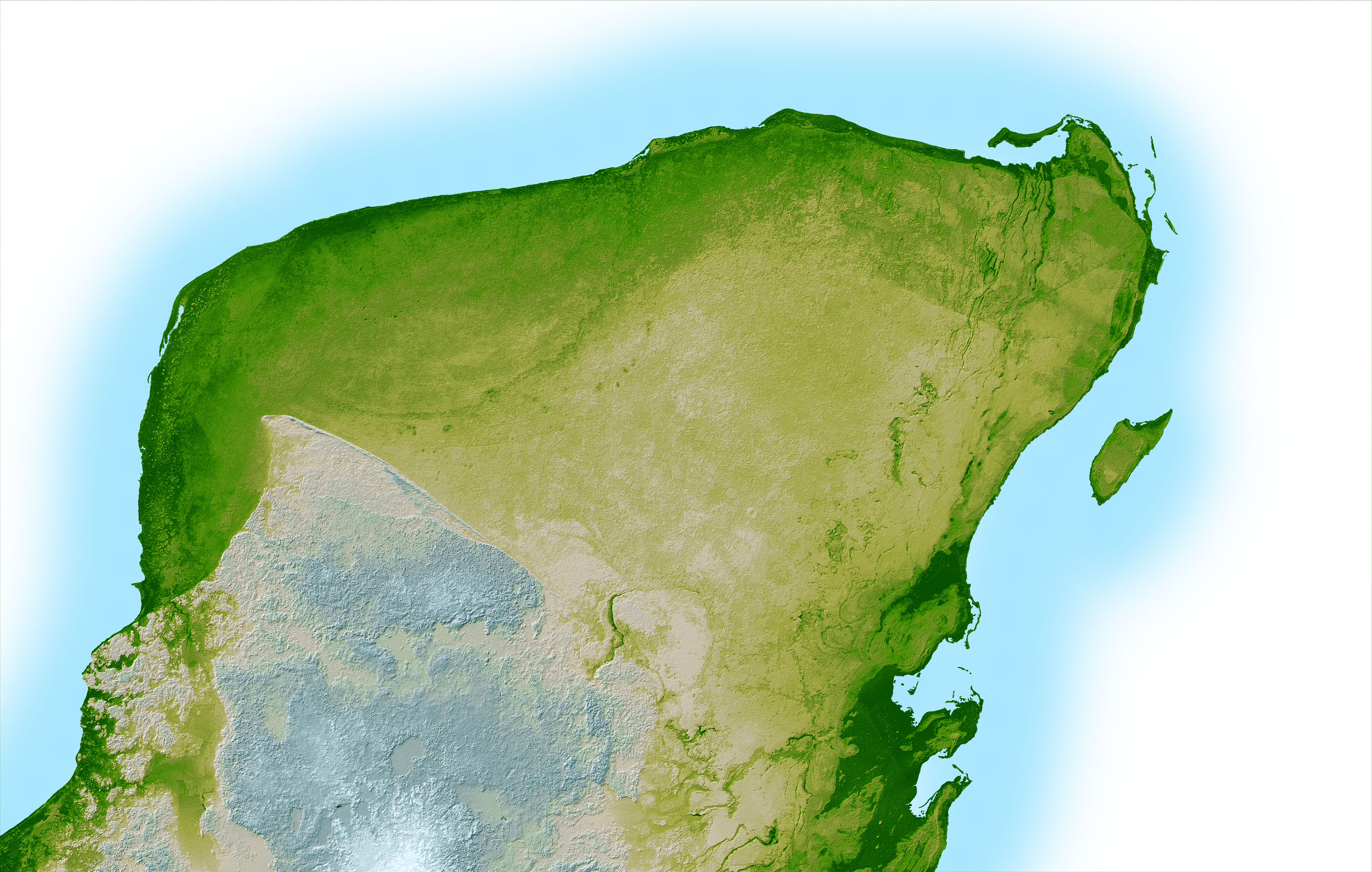An asteroid and volcano 'double punch' doomed the dinosaurs, study suggests
New research points to volcanic activity as a major cause of prehistoric mass extinctions.

Major volcanic eruptions could have caused mass extinctions throughout Earth's history, including the one that wiped out the dinosaurs around 66 million years ago.
Currently, the leading theory to explain the mass extinction that saw the end of the dinosaurs suggests that it was triggered when a massive asteroid impacted Earth in what is now the Chicxulub region of the Gulf of Mexico. However, new research suggests that the asteroid may have had an 'accomplice' in this extinction event in the form of volcanic activity.
This new research, which re-examined volcanic explosions in terms of the amount of lava they spewed, provides the most compelling evidence yet that the correlation between volcanic activity in geological records and the death of multiple species in the blink of a geological eye is no coincidence.
Related: NASA's DART asteroid-impact mission will be a key test of planetary defense
"Our results make it hard to ignore the role of volcanism in extinction," assistant professor of Earth Sciences at Dartmouth University, Brenhin Keller, said in a statement.
The fossil record contains the fingerprint of five major mass extinctions, the most famous of which is the one which happened in the Cretaceous period — which lasted between 145.5 and 65.5 million years ago — that killed the dinosaurs along with around 76% of all Earth's species.
Keller and his team found evidence of a type of volcanic fingerprint called a flood basalt corresponding with the Cretaceous period mass extinction and three of the other five mass extinctions recorded in Earth's geological record.
Breaking space news, the latest updates on rocket launches, skywatching events and more!
Flood basalt is left behind when either a series of small volcanic eruptions or one titanic one rapidly flood vast areas of land with lava. This process creates extensive regions of igneous rock in a step-like arrangement called 'large igneous provinces' that contain at least 100,000 cubic kilometers of magma.
Earth's history already shows evidence of how volcanic eruptions of this magnitude could trigger a mass extinction.
A series of eruptions in Siberia around 252 million years ago triggered what is one of the most severe mass extinctions ever discovered — the Great Permian Extinction. During these eruptions, massive amounts of carbon dioxide were released into the atmosphere killing 90% of all species and causing an environmental catastrophe.
Evidence of this violent and destructive volcanic activity is recorded in the Siberian Trap — a large region of volcanic rock around the size of Australia.
Around the time of the Cretaceous period mass extinction, the Indian subcontinent was rocked by volcanic eruptions that created the Deccan plateau — 7,000 feet (2,000 meters) of flat-lying basalt lava flows that cover an area of almost 190,000 square miles (500,000 square kilometers) in west-central India.
Just like the strike of the Chicxulub impactor is proposed to have done, this could have had far-reaching global effects and could have filled the atmosphere of Earth with sunlight-blocking dust and toxic fumes, choking the dinosaurs and other Cretaceous period species.
The actual cause of the extinction of the dinosaurs has been hotly debated for some time, but the discovery of the Chicxulub crater in the Gulf of Mexico and the massive impact that created it has become a 'smoking gun' dominating all other proposals.
"All other theories that attempted to explain what killed the dinosaurs got steamrolled when the crater the asteroid had gouged out was discovered," Keller said. "But there's very little evidence of similar impact events that coincide with the other mass extinctions despite decades of exploration."
As well as lining up the best available estimates of flood basalt eruptions with periods of drastic species extinction — including but not limited to the five mass extinctions — the team also created randomly generated timelines to test 100 million similar patterns.
They found that less than 1% of the simulated timelines agreed as well as the actual record of flood basalts and extinctions, suggesting the relationship between massive volcanic eruptions and mass extinction is not just random chance.
These new findings may shift the balance in favor of tremendous volcanic activity, but when it comes to the Cretaceous die-out, the team thinks that both the Deccan plateau eruption and the Chicxulub impactor may have acted as a 'double-punch' to wipe out the dinosaurs.
A paper detailing the team's findings is published in the journal Proceedings of the National Academy of Sciences.
Follow us on Twitter @Spacedotcom or on Facebook.

Robert Lea is a science journalist in the U.K. whose articles have been published in Physics World, New Scientist, Astronomy Magazine, All About Space, Newsweek and ZME Science. He also writes about science communication for Elsevier and the European Journal of Physics. Rob holds a bachelor of science degree in physics and astronomy from the U.K.’s Open University. Follow him on Twitter @sciencef1rst.

